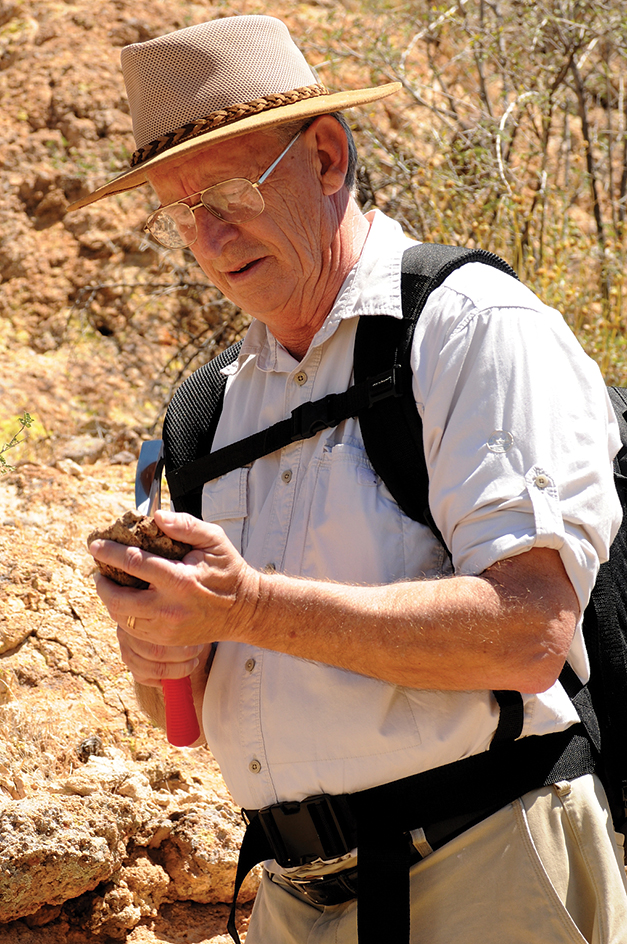Geology is the study of how the planet Earth formed and how it changes. Scientists called geologists study rocks, soils, mountains, volcanoes, rivers, oceans, and other parts of the planet. Some geologists study fossils, the preserved marks or remains of dead organisms from long ago. This investigation helps scientists learn how life developed on Earth. Geologists also study other solid bodies in the solar system, including Earth’s moon, other planets and their satellites, and asteroids and meteorites. The word geology comes from Greek words meaning study of Earth.
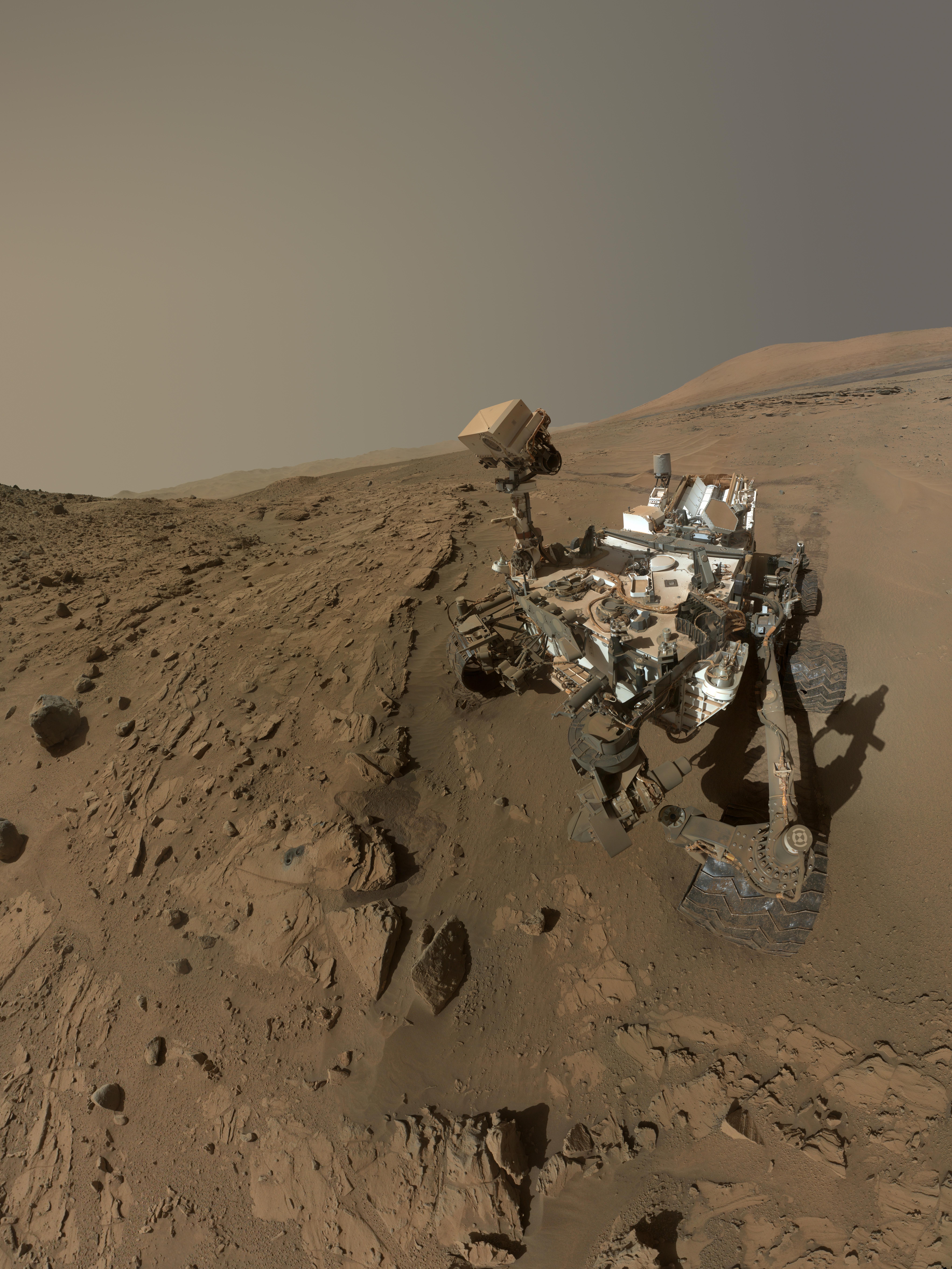
Geologists think that Earth formed about 4 ½ billion years ago, and the planet has been changing ever since. Huge areas of land rise and shift, creating mountains. Lava flows from volcanoes, then cools and hardens. The hardening lava forms crystals that grow together to form layers of rock. Great rivers of ice called glaciers creep down from mountains, scouring away and carrying off rocks and soil. When the glaciers melt, they leave behind the rocks and soil they carried on the lowlands or in the ocean. Water also changes Earth’s surface. Waves strike the shores, gradually washing away the land. Rivers wear down mountains and carry mud and sand to lowlands. There, the mud and sand mix with plant and animal matter and microbes, creating rich soil. Rivers also carry soil to the oceans. The movement of water across the ocean floor spreads layers of mud and sand that gradually harden into stone. Many of these changes occur slowly, and they will continue to occur as long as the planet exists.
This article includes information on geology as a study, the various specialized fields of study into which it is divided, and the career options available to geologists. For information on what scientists have learned about the composition and history of Earth, see the World Book article Earth. For information on the geology of other objects in the solar system, see Satellite and the articles on individual planets and satellites.
History
Most every ancient culture had myths and stories that explain how Earth was created. But many of them were a mixture of observations, superstitions, legends, and guesses. Geology did not develop as a scientific field until much later.
The ancient Greeks
were the first people to write about Earth’s structure and development based on systematic observations and reasoning. In the 400’s B.C., the historian Herodotus first recorded how water shaped the land. He understood that land at the mouth of the Nile River had formed from sand and mud deposited by the river. He also believed that marine fossils found in Lower Egypt were evidence that the sea had once covered the land.
Empedocles, a philosopher of the 400’s B.C., thought that Earth’s interior was composed of a hot liquid and that all things came from the elements earth, air, fire, and water. The philosopher Aristotle, who lived in the 300’s B.C., believed that Earth’s structure was constantly changing. His pupil Theophrastus wrote a short paper called “Concerning Stones,” which listed all the rocks and minerals known at the time. Strabo, a geographer and historian, wrote a 17-volume Geography about 7 B.C. He recognized that the rising and sinking of lands results partly from volcanic eruptions and earthquakes.
The Romans
contributed writings that were more factual than those of the Greeks. But Roman writings also included much superstition and guessing. In the A.D. 60’s, the philosopher Lucius Seneca wrote Quaestiones naturales, which provided detailed information on earthquakes, volcanoes, and waters both surface and underground. The 37-volume Historia naturalis by Pliny the Elder included all Roman knowledge about rocks, minerals, and fossils.
The Middle Ages.
The Roman Empire ended in the A.D. 400’s, and little scientific advancement took place for about 600 years. Then, in the early 1020’s, the Muslim philosopher Avicenna wrote a book that presented his views of erosion, the wearing away of rock and soil. The book also discussed the origins of rocks, meteorites, and mountains.
The Renaissance,
which occurred in Europe from about 1300 to 1600, was a period of renewed interest in many fields of learning, including geology. The German physician Georgius Agricola made major contributions to geology in the 1500’s. He wrote works on minerals, mining, and metallurgy (the science of metals). His books included De natura fossilium (1546) and De re metallica (1556). About the same time, the Polish astronomer Nicolaus Copernicus accurately described Earth’s place in the solar system.
One of the most important concepts in geology was put forth by the Danish physician Nicolaus Steno in 1669. He observed that older layers of rock tend to lie under newer layers. This idea, called the law of superposition, helps scientists to determine the order in which geologic events occurred.
Scientific geology.
Geology was established as a science in the 1700’s, mainly through the work of the Scottish scientist James Hutton. He understood that the intense heat and pressure within Earth were necessary for the formation of common rocks called basalt and granite. Hutton presented what would later be called the principle of uniformitarianism in his book Theory of the Earth (1795). This principle states that Earth has gradually changed in a variety of ways and will continue to change in the same ways.
Hutton also proposed that processes that shape Earth’s surface occur very slowly and are imperceptible to human observation. Hutton’s ideas conflicted with a popular theory called catastrophism. This theory held that Earth is shaped by great volcanic upheavals and similar catastrophes, rather than slow, continuous, uniform processes. Among believers of catastrophism, the Earth was widely thought to have been formed less than 6,000 years ago.
Hutton died in 1797, before other scientists accepted his ideas. But in 1802, John Playfair, a Scottish mathematician, expanded on Hutton’s work in the book Illustrations of the Huttonian Theory of the Earth. This book presented Hutton’s ideas clearly and with illustrations. It became a leading guide in the development of the field of geology. Later, geologists began using fossils and other evidence to infer information about Earth’s history and age. William Smith, an English civil engineer, was the first person to use fossils in mapping strata (layers of rock). In 1815, Smith made the first geological maps showing the strata of England.
Modern geology.
In 1830, the British geologist Sir Charles Lyell completed the first volume of a three-volume textbook called Principles of Geology. Lyell supported Hutton’s principle of uniformitarianism. His book greatly influenced other scientists and directly led to many developments in modern geology.
Louis Agassiz << AG uh see >> , a Swiss-born naturalist, studied European glaciers in the 1830’s and 1840’s. He suggested that a huge sheet of ice had once extended from the North Pole to Central Europe. Agassiz explained how the slow-moving fields of ice had altered Earth’s surface. In 1846, Robert Mallet, an Irish-born engineer, began the scientific study of earthquakes. He exploded gunpowder under the ground, then measured how rapidly the resulting vibrations traveled through rock.
The Scottish geologist Arthur Holmes was one of the first scientists to use radiometric methods to determine the age of rocks. Such methods make use of certain radioactive isotopes (forms of chemical elements). These isotopes are known to decay (break down into other isotopes) at a specific rate. By measuring the amount of each isotope in a rock sample, scientists can therefore determine how long a sample has been decaying and thus how long ago the rock formed. In 1927, Holmes published a geologic time scale in his book The Age of the Earth. By 1956, the American scientist Clair C. Patterson used radiometric methods to accurately determine Earth’s age. He measured isotopes of uranium and lead obtained from certain meteorites, thought to remain largely unchanged since the formation of the solar system. Patterson found that these meteorites are up to 4.6 billion years old. Scientists now think that Earth and the other planets of the solar system formed around the same time.
In the late 1960’s, several scientists proposed that Earth’s outer layer consists of a number of rigid plates that are in continual motion. This theory, called plate tectonics, explains the position of Earth’s continents, the shape of the ocean basins, and the occurrence of earthquakes and volcanoes. The theory of plate tectonics was first proposed by Arthur Holmes in 1929. He developed his ideas from a theory called continental drift, presented in 1912 by the German meteorologist Alfred Wegener. Although it is one of the most important concepts in geology, the theory of plate tectonics was not accepted by most scientists until after the late 1960’s.
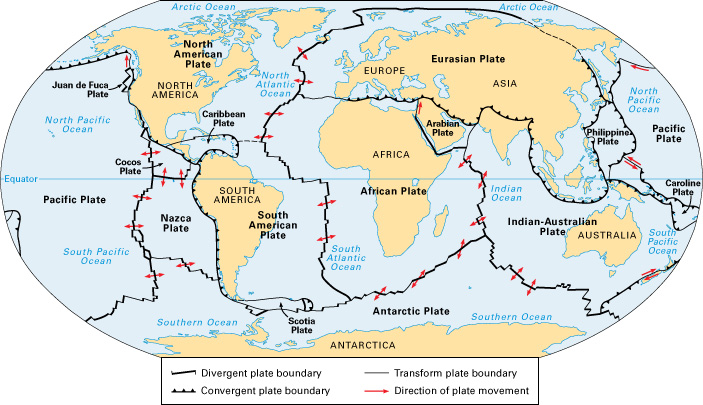
Fields of study
Today, there are many subdivisions within the study of geology. Many of these fields are closely related. In addition, modern geologists often work in interdisciplinary groups, which include scientists from various fields of study. For example, geologists may work on a team with environmental scientists and social scientists to evaluate the impact of human activities on the planet.
The study of Earth’s water
is the focus of several branches of geology. They include glaciology, hydrology, and oceanography.
Glaciology
is the scientific study of glaciers and ice on Earth’s surface. A glacier is a large mass of ice that flows slowly under the influence of gravity. Glaciologists study how glaciers move, melt, and grow. They may also study permafrost (permanently frozen ground), ice fields, and how the melting of ice structures affects the oceans and Earth’s surface.
Hydrology
is concerned with the scientific study of the water cycle and how the water cycle changes across environments and time. The water cycle is a model that describes how water moves around Earth’s surface. Hydrologists study precipitation (rain and snow), rivers, ground water (water below Earth’s surface), and evaporation. Some geologists specialize in limnology, the scientific study of lakes, streams, ponds, and other bodies of fresh water. Hydrologists also study the chemistry of water. They study how water interacts with rocks and minerals and how water transports solutes (dissolved substances) around and within Earth. Studying how human activity affects water resources and water quality has become an important part of hydrology.
Oceanography
is the scientific study of Earth’s oceans. Oceanographers usually specialize in one of four main subfields: (1) biological oceanography, (2) chemical oceanography, (3) geological oceanography, and (4) physical oceanography. Biological oceanography is the study of marine organisms and food webs. Chemical oceanography is the study of ocean chemistry and how it influences life in the ocean. Geological oceanography is the study of the ocean basins and how they formed and of sediments (particles such as sand and clay) on the ocean floor. Physical oceanography is the study of physical processes in the oceans, including currents, waves, and tides.
The study of rocks and minerals
is the subject of other branches of geology. They include geomorphology, sedimentology and stratigraphy, and volcanology.
Geomorphology
is the study of how Earth’s surface is shaped. Geomorphologists study how the ground is shaped and eroded by rivers, wind, land slides and other hill slope processes, and other factors.
Sedimentology and stratigraphy
are two closely related fields of geology. Sedimentology is the study of sediments and the processes that create and move sediment. Stratigraphy is the study of rock strata and their position in relation to one another. Both of these fields deal with the shallow surface of Earth, which is mostly comprised of sediment and sedimentary rock.
Volcanology
is the study of volcanoes. Volcanologists study the processes that form volcanoes to better understand why and when volcanoes erupt. Many volcanologists monitor volcanoes as part of early warning networks designed to alert people nearby of a possible eruption.
The interaction between Earth and life,
both past and present, is the subject of other divisions of geology. Two fields with this focus are biogeochemistry and paleontology.
Biogeochemistry
is the study of how various chemical elements and compounds cycle among the several large systems, called spheres, that make up Earth. Earth’s crust makes up the lithosphere. Much of Earth is covered by a layer of water or ice, called the hydrosphere. Earth is surrounded by a thin layer of air, the atmosphere. The portion of the hydrosphere, atmosphere, and lithosphere that serves as home to living things is called the biosphere.
Paleontology
is the study of ancient life on Earth. Paleontologists study fossils to learn what kinds of life existed at various times in Earth’s history. They also examine how once-living organisms are related to one another and to living things today. Dinosaur fossils are among the best-known examples in paleontology. But paleontologists also study fossils of marine invertebrates (animals without backbones), plants, and even microbes to learn about changes in Earth’s past. 
Human interactions with Earth
serve as the focus of some other divisions of geology. These fields include engineering geology, environmental geology, and petroleum geology.
Engineering geology
is a field in which geologists work with engineers to plan and construct roads, buildings, dams, tunnels, bridges, and other structures. Engineering geologists ensure that rock beds, cliffs, hills, and slopes at building sites are strong enough to withstand the stresses of construction and continued use.
Environmental geology
is an applied field of geology that focuses on how humans interact with and alter Earth. Environmental geologists seek to understand how humans change the planet through mining, agriculture, pollution, and construction. Many environmental geologists aim to develop remediation strategies to resolve changes in the environment caused by humans. 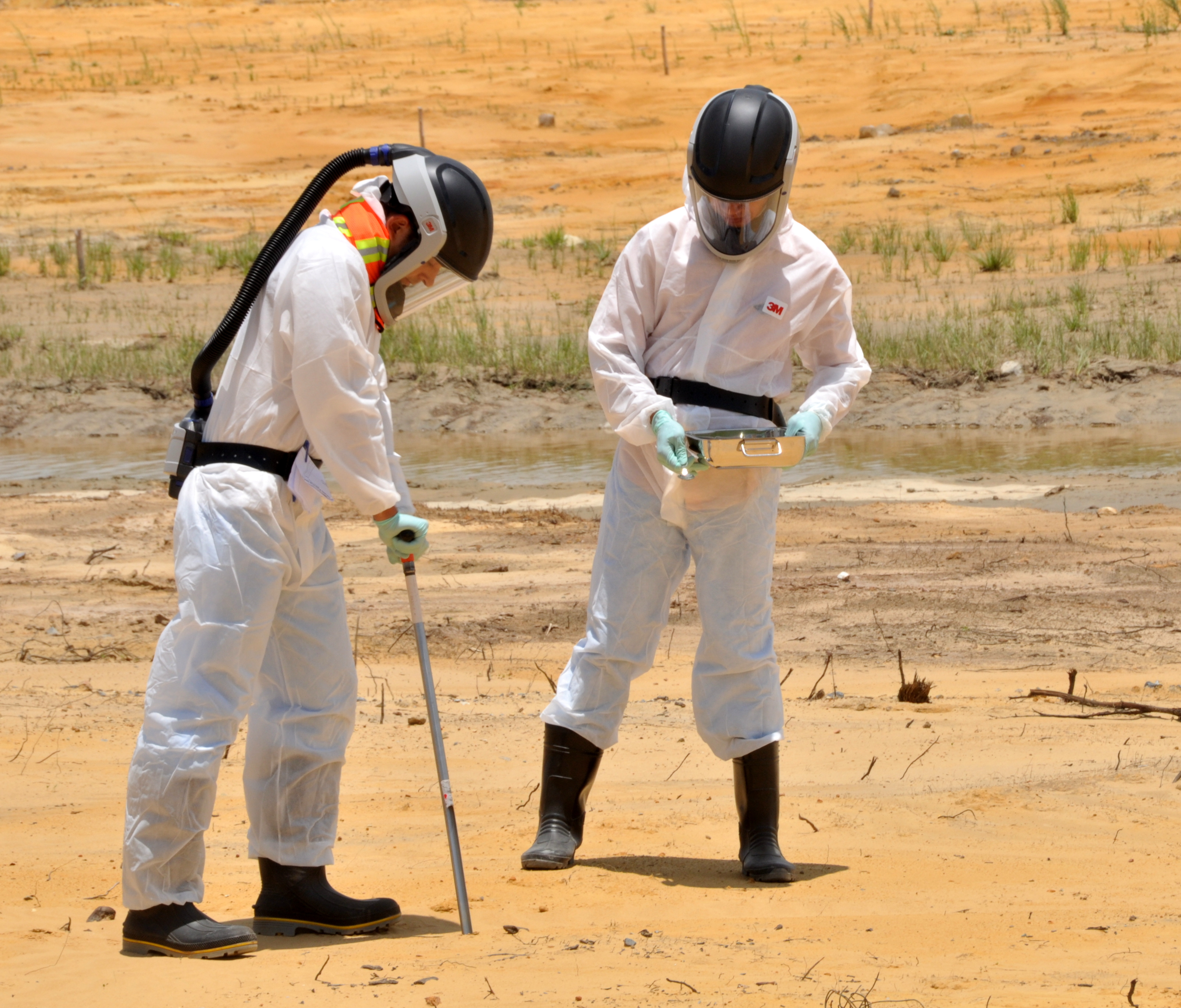
Petroleum geology
is the study of hydrocarbons (certain compounds of carbon and hydrogen) such as oil and gas found in rock formations. Petroleum geologists often locate and describe natural stores of oil for extraction. Geologists that similarly locate ore and gem deposits are called mining geologists.
Other highly specialized fields
of geology require specific knowledge from other branches of study or special techniques and equipment. They include atmospheric science, geologic mapping, geophysics, paleogeology, petrology and mineralogy, and planetary geology.
Atmospheric science
may be considered a subfield of geology, although it is often considered a separate field. Atmospheric scientists study the chemistry, physics, and circulation of Earth’s atmosphere in the short term and over Earth’s history.
Geologic mapping,
also called field geology, involves mapping rock units and formations on Earth’s surface. Field geology specialists travel around a region identifying and mapping rocks, minerals, outcrops, and other geologic units. Geologic mapping requires an understanding of mineralogy, geomorphology, and stratigraphy, in addition to map skills.
Geophysics
is the study of Earth’s matter and its interactions. Geophysicists may use seismic waves (shock waves produce by earthquakes or explosions) to learn about Earth’s interior. They may also use ground-penetrating radar to study structures below Earth’s surface.
Paleogeology
is the study of Earth’s history. Paleogeologists use clues from rocks and fossils to reconstruct conditions on Earth at different times in the distant past. Paleogeology includes the subfields of paleomagnetism, the study of Earth’s magnetism as recorded in ancient rocks; paleoceanography, the study of ancient oceans; and paleoclimatology, study of Earth’s past climates.
Petrology and mineralogy
are similar fields of geology that focus on the property, composition, and formation of minerals and rocks. Minerals are naturally occurring substances with a crystalline structure. Rocks are made up of various minerals.
Planetary geology
is the study of other planets, of satellites, and of other solid bodies in the solar system. Planetary geologists may analyze samples of distant worlds brought back by space missions or found in meteorites, chunks of rock and metal that have crashed to Earth. They may also use remote sensing techniques, for example sending probes to measure radio or light waves, take photographs, conduct chemical analyses, or detect magnetic fields. Planetary geologists also use computer models to understand how planets and planetary systems form.
Careers
Geologists have a wide variety of career choices. Many work for government agencies. In the United States, such agencies include the United States Geological Survey (USGS), the Environmental Protection Agency (EPA), the National Oceanic and Atmospheric Administration (NOAA) , the National Park Service (NPS), and the Bureau of Land Management (BLM). Geologists may also work for federal or state highway departments and water management districts.
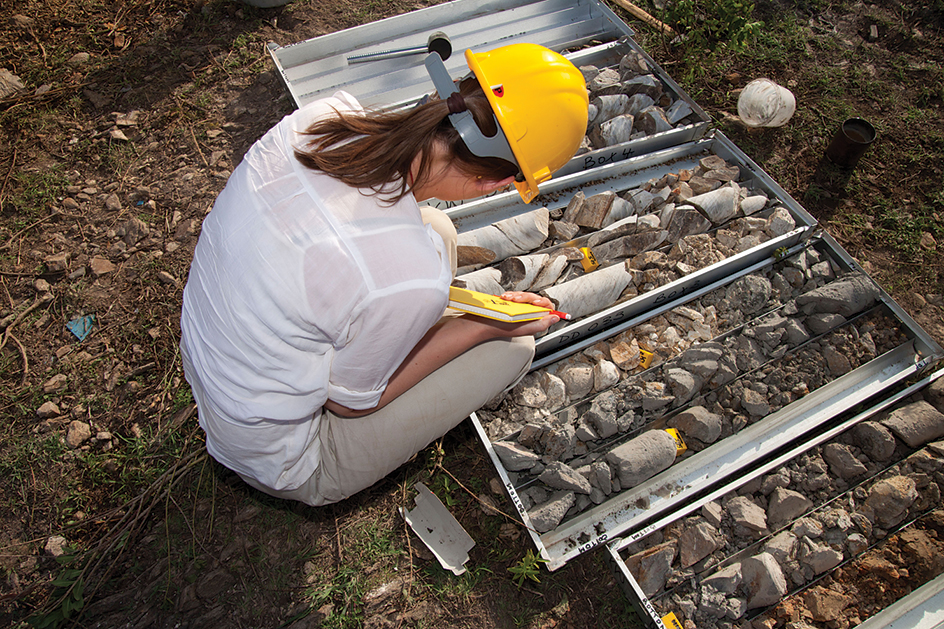
Geologists locate such useful substances as building stone, clay, and underground water. They create maps and interpret aerial photographs. They also supply information on how to maintain the water supply and keep it from becoming polluted. Geologists contribute to space exploration by interpreting images of planetary surfaces, data that indicate the chemical makeup of those surfaces, and rock samples from the moon and other bodies.
Most geologists work for private companies. The most common careers in private industry for geologists are working for petroleum or mining companies and private consulting firms. Geologists may assist in the exploration for coal, oil, gas, uranium, and other useful and valuable minerals. Consulting firms provide advice and many services to people and other companies. Such services include water and soil testing, management of environmental remediation sites, surveys and testing of ground water, and evaluation of potential construction sites. Some geologists specialize in education, teaching students from middle school to college age as a teacher, lecturer, professor, or outreach specialist.
Most careers in geology require a bachelor’s degree, although research careers generally require a masters or doctorate. Geology departments at many universities go by other titles, including Earth and planetary sciences; Earth system science; Earth and environmental sciences; Earth, ocean and atmospheric sciences; geoscience; or geospatial science.
